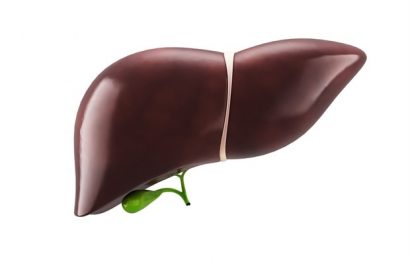25-year Swedish study reveals link between road traffic pollution and increased mortality risk
In a recent study published in Toxics, researchers analyzed the long-term mortality impacts related to exposure to particulate matter of diameter ≤2.5 mm (PM2.5), PM10, black carbon (BC), and nitrogen oxides [NOx, including nitrogen monoxide (NO) and nitrogen dioxide (NO2)] among Swedish individuals between 1991 and 2016.
 Study: The Long-Term Mortality Effects Associated with Exposure to Particles and NOx in the Malmö Diet and Cancer Cohort. Image Credit: QinJin/Shutterstock.com
Study: The Long-Term Mortality Effects Associated with Exposure to Particles and NOx in the Malmö Diet and Cancer Cohort. Image Credit: QinJin/Shutterstock.com
Background
In several studies, exposure to air pollution has been associated with adverse health impacts in the long run.
Investigating the association between air pollution and mortality could inform health policy-making and strategy development aimed at curtailing air pollutant exposure and improving the longevity of individuals across the globe.
About the study
In the present study, researchers determined the links between PM2.5, PM10, NOx, and BC air pollutant long-term exposures and natural (due to causes other than trauma and injuries) mortality in the Malmö Diet and Cancer Cohort (MDC) cohort, diagnosed using International Classification of Diseases, tenth revision (ICD-10) codes.
The study included 30,438 MDC participants with birth years ranging from 1923-1950, living in the Malmö city of Sweden, and recruited between 1991 and 1996.
At recruitment, 30,438 individuals underwent medical screening, including diet and lifestyle questionnaires, clinical examinations, and serum sampling. Mortality-related data were obtained from the National Mortality Cause Register of Sweden.
The modeled PM2.5, PM10, NOx, and BC concentrations at the participants’ Statistics Sweden-geocoded residential addresses were analyzed to evaluate exposure to air pollutants. The Environmental Department of Malmö modeled air pollutant concentrations in 18 kilometer-by-18-kilometer-areas.
Modeled pollutant concentrations denoted the cumulative traffic-exhaust emissions, non-exhaust emissions (particles from wear of brakes, tires, and roads, including resuspension), shipping, heating, households, industry, and transport emissions over long distances.
The modeled air pollutant concentrations were represented as grids with a 50-meter-by-50-meter spatial resolution.
Cox proportional hazards regression modeling was performed to calculate the hazard ratio (HR) values related to each interquartile range (IQR) elevation in every air pollutant based on lag windows denoting exposure in the same calendar year (lag0), one to five years (lag1 to lag5), and six to ten years (lag6 to lag10).
The models were adjusted for covariables such as age, sex, educational attainment, cohabitation, smoking status, alcohol intake, physical activity, waist/hip ratio, blood pressure, and antihypertensive medication use.
Results
Of 30,438 individuals, 17,551 (58%) survived through the study period, 12,663 (42%) died, and 264 (a percent) shifted out of the study location. The mean NOx concentrations during the study ranged from 25 to 30 µg/m3.
Adjusting for all covariables, the hazard ratios for PM2.5, PM10, black carbon, and nitrogen oxides obtained in single-pollutant modeling at lag1 to lag5 were 1.0, 1.1, 1.1, and 1.1 per increase in IQR, respectively. The hazard ratios were most robust for the elderly aged 60 to 70.
The hazard ratios, in the majority of cases, were reduced after including more covariables in the modeled estimations. Nitrogen oxides yielded the strongest associations, with significant positive hazard ratios in all models. The quadratic polynomial analysis findings indicated a linear association between NOx exposure and survival times.
The more profound impacts at lag1 to lag5 and lag6 to lag10 compared to lag0 for pollutant particles indicated a delay between pollutant exposure and their effects on mortality. Another probable explanation could be that the air pollutants were more hazardous in the earlier periods.
Unspecified-type PM does not denote a uniform estimate of particles concerning their physical properties and chemical composition. The particles may originate from various sources with spatiotemporal variations in a single city.
Given that the study analyzed the effects of exposure over ≤25 years, the physical properties, chemical composition, and toxicity of the pollutant particles to which the study participants were exposed may have varied considerably during the period. Seasonal variations may have occurred.
The weak associations between nitrogen oxides and particulate matter (PM2.5 and PM10) indicated that particulate matter may have originated from non-traffic sources.
PM toxic fractions, including dust on roads, could have been more robustly associated with nitrogen oxides and might, thus, not contribute considerably to the hazard ratios using unspecified PM as exposure variables.
Conclusions
Overall, the study findings showed that exposure to air pollutants linked with road traffic, such as nitrogen oxides, was strongly connected with death, emphasizing the relevance of traffic-related air pollution in early mortality.
Further research is needed to understand the health impacts of exhaust components like VOCs and PAHs and metals from engine wear, lubricating fluids, and fuels that bond to exhaust particles.
Non-exhaust emissions are becoming more significant, but epidemiological research on road traffic-related pollutants is scarce. Future research should incorporate ultrafine particles and compensate for different components using high-quality air pollution data.
Addressing fuel characteristics like aromatic and metal content is crucial as they influence the toxicity of PM emissions from diesel, gasoline, and ethanol-powered cars and non-road machines.
-
Olstrup, H.; Flanagan, E.; Persson, J.-O.; Rittner, R.; KrageCarlsen, H.; Stockfelt, L.; Xu, Y.; Rylander, L.; Gustafsson, S.; Spanne, M.; et al. (2023) The Long-Term Mortality Effects Associated with Exposure to Particles and NOx in the Malmö Diet and Cancer Cohort, Toxics, 11, 913, doi: https://doi.org/10.3390/toxics11110913. https://www.mdpi.com/2305-6304/11/11/913
Posted in: Medical Procedure News | Medical Science News | Medical Research News | Medical Condition News
Tags: Air Pollution, Alcohol, Blood, Blood Pressure, Cancer, Diet, Ethanol, International Classification of Diseases, Mortality, Physical Activity, Pollution, Research, Smoking, Trauma

Written by
Pooja Toshniwal Paharia
Dr. based clinical-radiological diagnosis and management of oral lesions and conditions and associated maxillofacial disorders.


